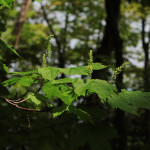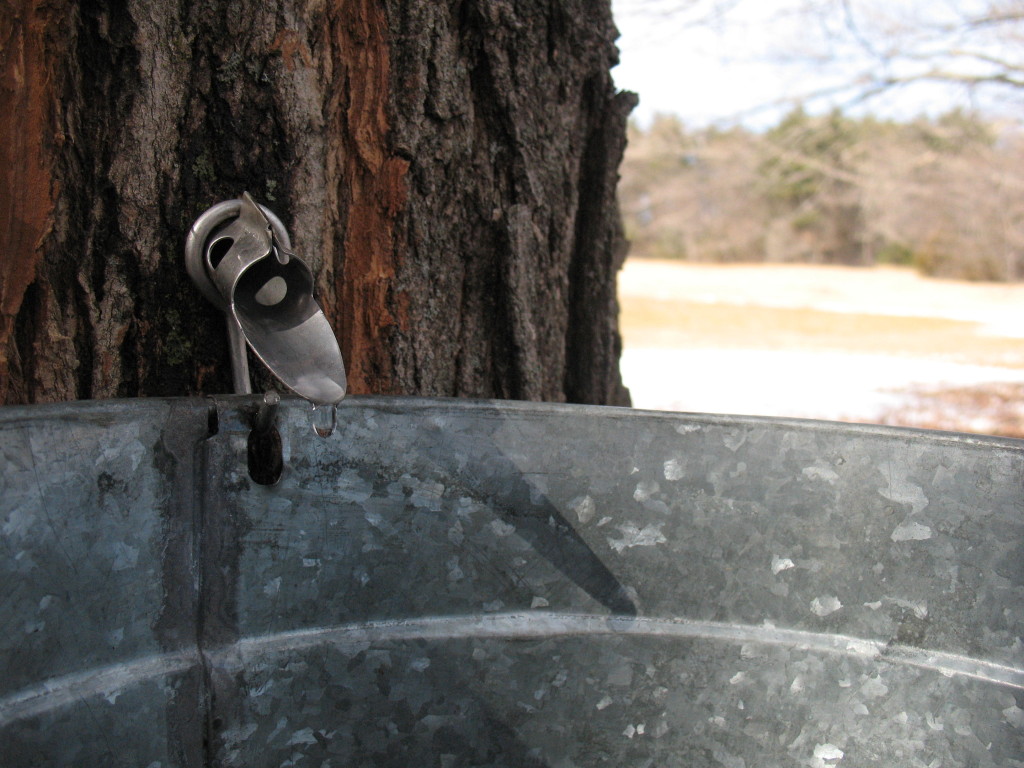 It’s maple sugar season: that time of year when we tap trees for their sweet sap, and boil it down to make syrup and other treats.
It’s maple sugar season: that time of year when we tap trees for their sweet sap, and boil it down to make syrup and other treats.
The star of the show is the famous sugar maple (Acer saccharum), but you can spot many other equally stunning maples in Massachusetts.
Maple Tree Basics
Before you go looking for maples, here are some general tips. First, keep an eye out for opposite branches. All maples have buds, leaves, and branches that appear in pairs opposite each other. Only a few other trees, including ashes and dogwoods, share this pattern. Combining this observation with other clues such as bark texture and habitat can help you identify maples before their leaves appear.
You might also see trees outfitted with sap collection buckets that aren’t sugar maples. Other maple trees can produce tasty sap, though they’re not usually as popular for sugaring as sugar maples (some are less sweet or less abundant, for example).
Some Maples to Meet
Here are a few of the species you may spot:
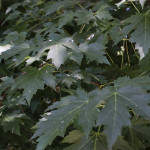 Silver maple (Acer saccharinum) This beautiful tree is named for the silvery underside of its many-pointed leaves. Find it growing on floodplains, often near fiddlehead-bearing ostrich ferns or in urban areas, where it’s a common street tree. Older silver maples, which can be 70 feet tall, have shaggy bark.
Silver maple (Acer saccharinum) This beautiful tree is named for the silvery underside of its many-pointed leaves. Find it growing on floodplains, often near fiddlehead-bearing ostrich ferns or in urban areas, where it’s a common street tree. Older silver maples, which can be 70 feet tall, have shaggy bark.
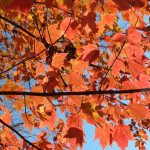 Red maple (Acer rubrum) This tree lives up to its name: the leaf stalks are red, the leaves turn red in fall, and even the twigs are red. It’s also a true survivor—it grows as far south as Florida and north as Quebec, and in urban settings, upland forests, swamps, and many other habitats.
Red maple (Acer rubrum) This tree lives up to its name: the leaf stalks are red, the leaves turn red in fall, and even the twigs are red. It’s also a true survivor—it grows as far south as Florida and north as Quebec, and in urban settings, upland forests, swamps, and many other habitats.
Mountain maple (Acer spicatum) This is a small maple that likes moist forests. Its leaves are smaller and more jagged than the striped maple’s. The bark is brown and the twigs are red. People sometimes say it looks like a rugged mountain man who’s wearing brown pants and a red shirt!
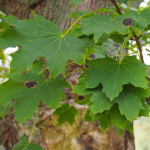 Norway maple (Acer platanoides) This species has been introduced from Europe and Asia. It tolerates pollution, drought, and other hazards of urban areas, and its broad leaves shade out other plants, making it a threat to our native trees. Its bark is patterned with small ridges. If you crush its leaves or stems, you’ll find a surprise: a milky white sap. People have bred many color variants—if you see a maple with purplish-red leaves, chances are it’s a Norway maple.
Norway maple (Acer platanoides) This species has been introduced from Europe and Asia. It tolerates pollution, drought, and other hazards of urban areas, and its broad leaves shade out other plants, making it a threat to our native trees. Its bark is patterned with small ridges. If you crush its leaves or stems, you’ll find a surprise: a milky white sap. People have bred many color variants—if you see a maple with purplish-red leaves, chances are it’s a Norway maple.
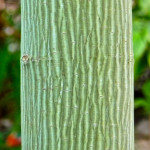 Striped maple (Acer pensylvanicum) This small tree has big, 3-lobed leaves. Its most memorable feature is the bark of younger trees, which has elegant vertical stripes of green, grey, and brown. Look for it in moist woods.
Striped maple (Acer pensylvanicum) This small tree has big, 3-lobed leaves. Its most memorable feature is the bark of younger trees, which has elegant vertical stripes of green, grey, and brown. Look for it in moist woods.
Photo credits: Silver Maple via flickr/natureandevents; Red Maple NPS/Alicia Lafever; Mountain Maple via flickr/Per Verdonk; Norway Maple via flickr/F D Richards; Striped Maple via Art Poskanzer


